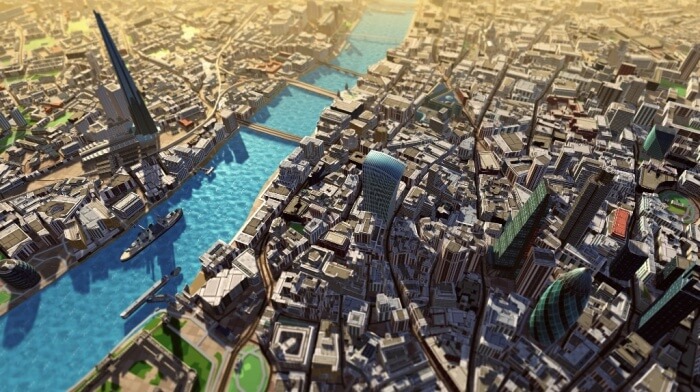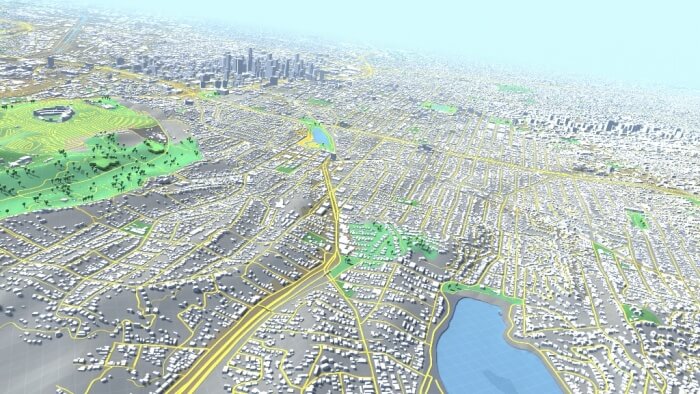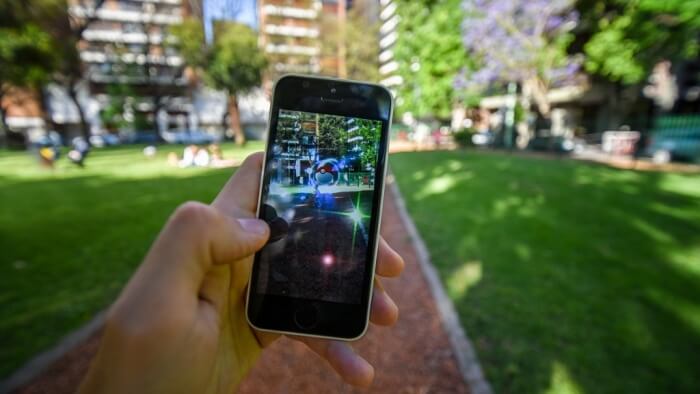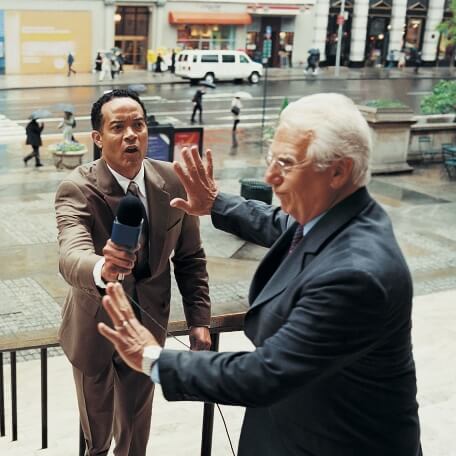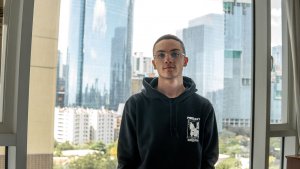'We Made A Grand Theft Auto For The Real World'
3D mapping platform WRLD has practical applications across the business world, says founder.
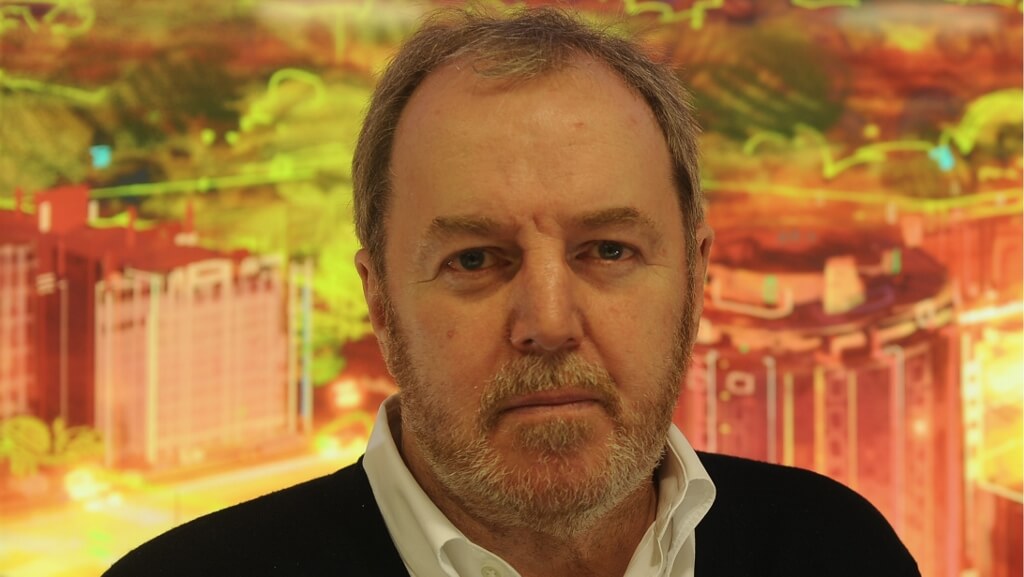
Ian Hetherington, founder of 3D mapping platform WRLD, explains the fine balance of developing technology before its time - and the associated challenges of building demand and securing funding for growth.
Tell us about your business.
We are building a 3D map of the world that anyone can use. The map encourages users to explore indoor and outdoor spaces through unprecedented orientation, user interaction and visualisation.
We model all the physical features of the world such that they are interactive objects with semantic data and physical properties.
This means we can interact with any object in our world be it a building, car, person, mobile phone, sensor, desk, road or a cherry blossom tree. The applications go as far as the imagination can take you.
Where did you get the idea?
The genesis of the project was to build a video game version of the world – Grand Theft Auto in real world locations – literally. This was 12 years ago so PokemonGo wasn’t even a dream, nor was Facebook come to think about it.
Demand was all about vision, when you innovate at this level you have no empirical data to draw on so you have to identify market trends and back your hunch. Often described (incorrectly in my opinion) as – “build it and they will come”.
I prefer stick to vision and trust your colleagues and team to share it and deliver. If you are wrong and start to diverge along the way you will know soon enough – communication is key.
This is not the first time I have used this philosophy, building CD-ROM and 3D capability at Psygnosis simply to push the boundaries of gaming at the time made us a natural M&A target for Sony given their ambition for the PlayStation console.
What Psygnosis provided was the gaming, authoring technology and consequent hardware specification to go with the device. That first Christmas for PlayStation One was defined by Wipeout, F1, and Destruction Derby – all Psygnosis titles plus the bonus that all PlayStation games were developed on Psygnosis development Systems.
Plot the growth story to today.
The WRLD platform has its roots in the gaming industry where the technology was originally developed as an environment for online and social gaming.
The company was born out of a disruptive vision and developed a solution that enabled the automatic generation of a geometrically accurate 3D model of the world that could be rendered as a gaming environment. This was envisaged as an open platform for publishing of interactive games and applications.
With the emergence of highly capable smartphone and tablet devices, and the rapid transition of business to delivering services in a mobile-first environment, the core technology platform was further developed and case-hardened to capitalise on these trends.
A digitally native representation of the physical world in 3D – powered by a single global coordinate system – is now in high demand and as a result the market has come to us. This is not uncommon when running at this level of innovation.
Is there a big opportunity in this market?
Embarking on a mission to build a virtual representation of the real world, means hefty upfront investments are required. For it to work and be successful, the technology also has to be case-hardened, robust and cutting edge.
We can differentiate ourselves from the likes of Google and Apple, in the sense that we allow businesses to create personalised maps based on the type of data their customers want to visualise. All of which can be incorporated in a broader, virtual, real world scenario.
Augmented Reality is front of mind for us and is responsible for driving innovation of our platform. Being able to sustain the performance needed to deliver the best customer experience means it has to be designed in a certain way, as every component streamed via the network adds to the hurdle.
We aspire to be the go-to platform for an intelligent 3D model of the world, where we can provide the SDKs and tooling for any developer wanting to visualise semantic data or object-driven interaction. This is particularly important in the use case of Internet of Things, Smart Cities and automotive.
What have been the major bumps in the road and how have you overcome them?
We underestimated the challenges associated with developing the technology, as 3D mapping at country wide scale is an awesome problem to tackle.
Establishing the right level of differentiation has also proved difficult in light of rapidly evolving networks and device form factors requiring an agile, malleable technology solution.
We always strive to hire the best talent and this has helped us stay ahead of the curve and on top of evolution and emergent behaviour.
Raising finance has been a challenge, as is the case of many fast growing start-ups. We have worked hard to make our business proposition interesting for the world’s largest VCs and secured investment in several funding rounds.
How have you marketed the business?
To date developing our brand has not been an absolute priority but that has now changed. Having built and proven the technology with partners and over 6 million downloads we are ready to reposition the company and embark on an aggressive go to market strategy.
We are currently at the early stages of the marketing awareness process but the disruptive nature of the technology has meant that we’ve received attention from media, partners and end user clients.
People are naturally curious about its capabilities and use cases and are often intrigued by the company’s gaming heritage.
Our experience has proven that going to market via established partners is the best route as it enables scalability and gives instant validation of the technology as our partners are trusted, well known brands.
However, this in itself is a challenge. The bigger players tend to be cautious and very process driven so you’re in it for the long haul, but when you manage to solidify the relationship it really pays dividends.
What the hardest thing about running your own business and what makes it fulfilling/fun?
At certain times everything seems hard but at the same time that is part of why it is so fulfilling.
No business can be successful unless you work hard and make the journey rewarding and fulfilling otherwise the passion is not there and it is the passion that helps you get through the long working days and the obstacles that inevitably crop up along the way.
Building a team with the right mix of skills, talents and experiences is an ongoing challenge, particularly as the business grows, evolves and matures. But nothing beats the feeling of seeing that team work in unison conceiving, creating, and delivering something which exhibits the pride and passion upon which it is built.
What one thing would you change about doing business in the UK?
The lack of availability of second stage capital is a major roadblock for businesses that have a desire to expand and grow. I’d like to see politicians and the financial ecosystem support innovation within the tech industry as our economy would reap the rewards.
My suggested quid pro quo is that if IP is created in the UK with any degree of financial support then the IP or an economic interest should be anchored in the UK so that the benefit flows inwards.
When it comes to promoting IP in the UK, Brexit is an enabler. This will free up more cash for born in Britain start-ups and encourage the creation of indigenous industries in the UK enabling us to invest time and money into educating new talent.
What is your biggest mistake?
Innovation should never be considered a mistake but we launched our technology too far ahead of the market opportunity. If you start to innovate at this level, you need to anticipate the market demand and potential adoption.
If it takes three years to build a piece of technology, you need to consider timing to enable the market to develop at the same speed. This is a delicate balance but if you get it right the market will mature in front of you as you build your tech.
What sets your business apart from the rest and how have you nurtured that point of difference?
Our differentiator is that we can do more with less. We’ve developed a smarter way of rendering maps in 3D which means that a minimal amount of data is required to map roads, railways, water bodies, the built environment both the internal and external representation of buildings and visualise metadata to create meaningful actionable insights.
We have invested heavily in this way of working and nobody in this space is following that roadmap.
As well as this, our partnerships have enabled us to map interiors in 3D with millimetre geospatial accuracy. Something our competitors are unable to do.
This means that users of our maps can transition seamlessly through the interior of any building into the exterior environment. This is going to prove invaluable for our customers that seek to build their 3D maps with VR and AR capabilities.
How you developed your staff - how do you recruit, how do you inspire your people and what incentives do you give them to stay loyal?
A business is only as good as the team behind it, so we set the bar very high and actively seek out the best and brightest. To attract and retain talent you have to have a clear vision so that people can really buy into what it is you are striving for.
But you’ve also got to back up this vision with strong tech and a robust business model so that they believe in the ability of the business to execute, and so realise the ultimate rewards. This is intellectually attractive and high on the list when reaching out for talent.
12. How do you rate government support for growing businesses and why?
I consider it to be a bit like the NHS. The people are fantastic but it is systemically broken. In the UK the angel and seed stage is very strong and promotes entrepreneurial activity and similarly the growth stage is well supported but the Venture Capital environment is limited.
This is because the risk profile for series A and B is considered too high and in the UK I don’t feel we are skilled in assessing risk in relation to business potential.
13. What are your top three tips for people starting a business today?
1. Invest time in laying good groundwork. This will reduce the likelihood of mistakes being made further down the line and can avoid unexpected obstacles.
2. Perseverance is essential. It’s not always going to be glamourous or rewarding but if you can weather the testing times the benefits will be worth it.
3. Be tenacious, but not dogmatic. Have a vision and hold it true to everything you do, but don’t be too proud to learn and grow as the business and market evolves and grows.
Thanks for signing up to Minutehack alerts.
Brilliant editorials heading your way soon.
Okay, Thanks!